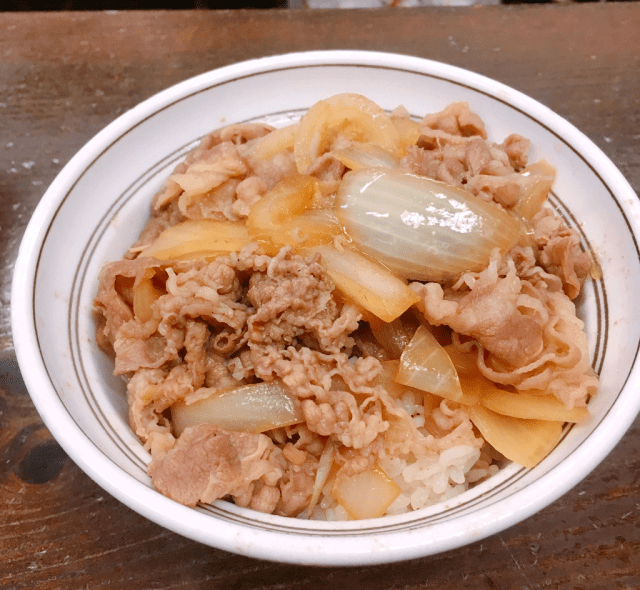
The oldest location of the beef-on-rice specialist is tucked away in a part of the country where hardly anyone is thinking about meat.
As Japan’s favorite place to get its beef fix, you might expect Yoshinoya to trace its roots to one of Japan’s prestigious cattle-raising regions, like Hyogo Prefecture’s Kobe, Gifu’s Hida, or Mie’s Matsusaka. But actually the oldest Yoshinoya in Japan is located in a place where beef, and meat in general, is the farthest thing from many people’s minds (and stomachs).
The oldest Yoshinoya branch in Japan is inside Tokyo’s Tsukiji Fish Market, the culinary mecca that draws sushi lovers from all over the world. Technically, this is the second Yoshinoya to ever open, as the very first restaurant to bear the name was in the city’s Nihonbashi neighborhood, also near a fish market. However, when that market closed down due to damage from the Great Kanto Earthquake of 1923, the fish merchants migrated to Tsukiji, and Yoshinoya followed its customers, shutting down the Nihonbashi restaurant and transferring the staff to the Tsukiji location in 1926, thereafter designating it “Yoshinoya Branch #1.”
Sadly, a large section of the Tsukiji market is scheduled to close on October 6, as part of the long-delayed relocation of the facility’s professional auctions and wholesale activities to Toyosu, a section of Tokyo farther away from the city center. Yoshinoya’s oldest branch will be shutting down then too, so we decided to stop by for one last meal at the holiest of holy sites in the beef bowl faith.
Over the years, Tsukiji has grown into a bona fide tourist destination, and even though we showed up at 10:30 in the morning on a Friday, there were long lines stretching from the local restaurants, with about twice as large of crowds as usual having turned up to see the market on its last full day of full operation. Yoshinoya fans had turned up in force too, and as we approached the entrance, we saw a crowd control employee holding up a placard marking the end of the line.
But “quick” is one of the three pillars of Yoshinoya’s success (“tasty” and “inexpensive” being the other two), and after waiting for about 10 minutes or so, the staff ushered us inside. There are a couple of unique order options that are only available at this Yoshinoya branch, such as having your meat placed at the bottom of the bowl and the rice on top, or substituting cold rice for hot. But since this is the oldest Yoshinoya in Japan, we decided to go with the standard beef bowl.
▼ But we made sure to order a large, since this would be our last chance ever to eat here.
As we munched on the familiar and comforting mixture of stewed beef, onions, and rice, we reflected on the sign posted above the restaurant’s entrance, which says:
“In striving to satisfy the fish market workers, we learned that our purpose was to provide them with quick, delicious, and inexpensive beef bowls. The flavor of Yoshinoya, loved first in Japan and now around the world, came from the careful consideration of each and every aspect of producing our customers’ meals, from the ingredients we use to the way we cook them. It is a flavor that, truly, was born in this very spot.”
Yoshinoya’s beef is seasoned to a sweet and salty broth, but we couldn’t help but feel a little bittersweet as we finished our food and walked away, glancing back for one last look at the humble beginnings of a restaurant chain that’s become not just a shared cultural experience among anyone who’s ever lived in Japan, but an edible ambassador of the country to other nations. Thankfully, the traditions developed at the original Tsukiji Yoshinoya are carried on at its other branches, and while we’re sad to see branch #1 go, at least we can still enjoy the ultra-premium Yoshinoya that we can only get at Tokyo’s Haneda Airport.
Restaurant information
Yoshinoya (Tsukiji #1 branch) / 吉野家(築地1号店)
Address: Tokyo-to, Chuo-ku, Tsukiji 5-2-1, Tsukiji Ichiba Building 1
東京都中央区築地5-2-1 築地市場 1号館
Open 5 a.m.-1 p.m. October 6, closed thereafter
Photos ©SoraNews24
[ Read in Japanese ]
Follow Casey on Twitter, where it’s impossible for him to write about beef bowls without getting hungry.
[ Read in Japanese ]

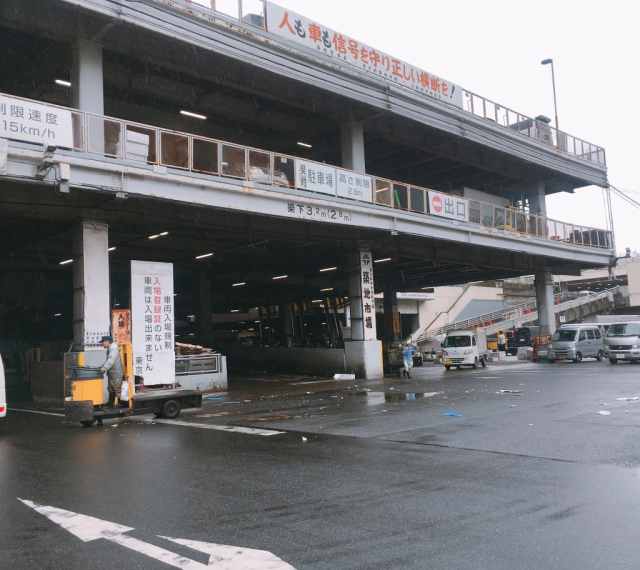
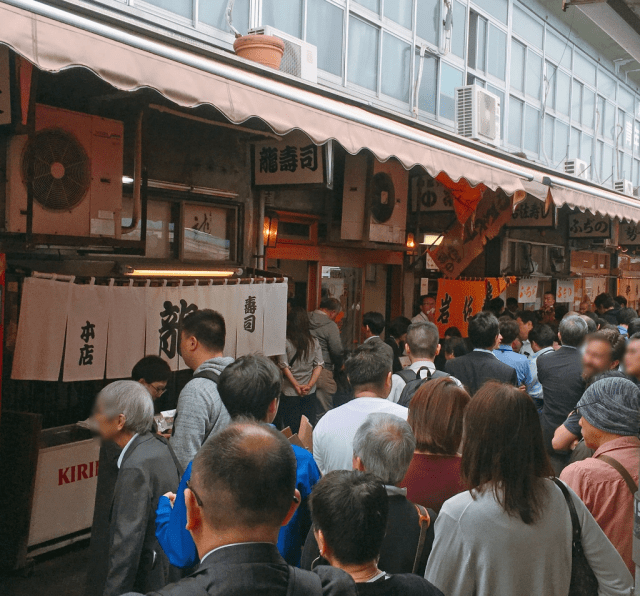
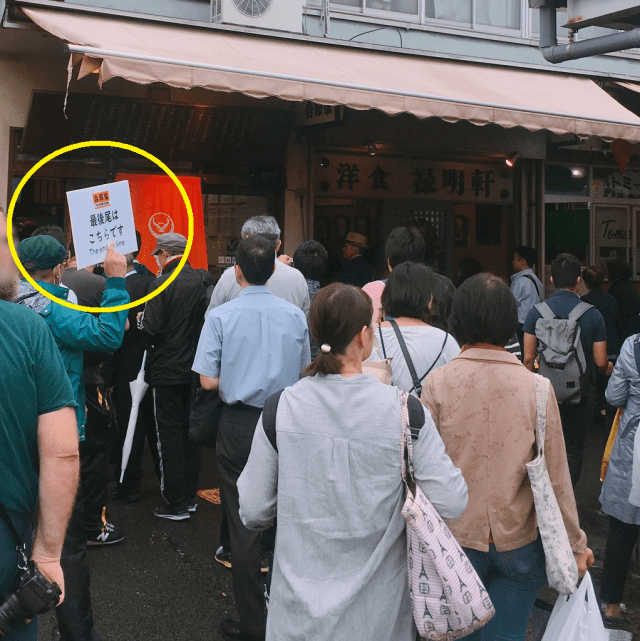
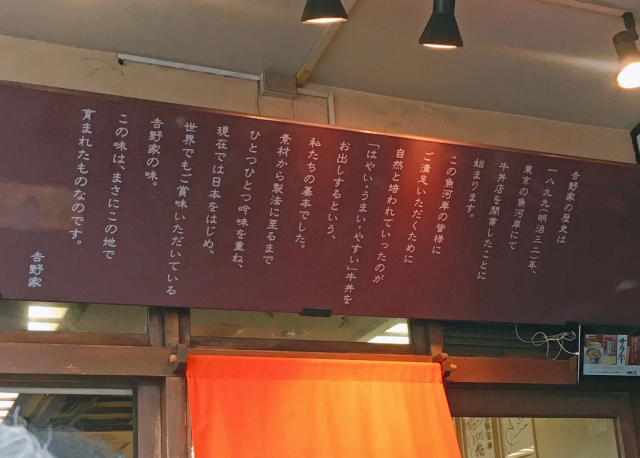
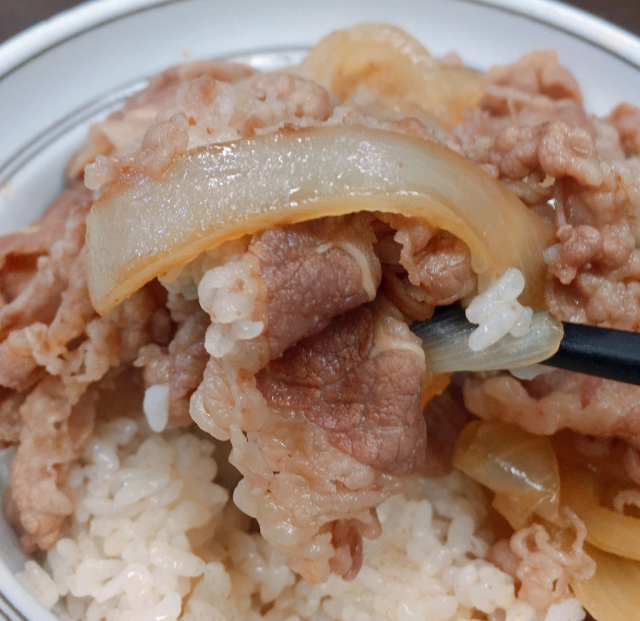
 Beef bowl chain Yoshinoya’s historic first store to close, special countdown site launched!
Beef bowl chain Yoshinoya’s historic first store to close, special countdown site launched! Yoshinoya has an ultra-luxurious wagyu beef bowl you can only get one place in Japan【Taste test】
Yoshinoya has an ultra-luxurious wagyu beef bowl you can only get one place in Japan【Taste test】 Yoshinoya’s wagyu beef box for Japanese politicians
Yoshinoya’s wagyu beef box for Japanese politicians Try this netizen’s “secret menu” item beef bowl at Yoshinoya, if only to see what the heck it’s about
Try this netizen’s “secret menu” item beef bowl at Yoshinoya, if only to see what the heck it’s about Trying Yoshinoya for the first time in his life, is our Indonesian reporter impressed?【Taste test】
Trying Yoshinoya for the first time in his life, is our Indonesian reporter impressed?【Taste test】 Japan’s new difficult-to-drink-from beer glass protects your liver, but it’s a brutal experience
Japan’s new difficult-to-drink-from beer glass protects your liver, but it’s a brutal experience New Pokémon ice cream, dessert drinks, and cool merch coming to Baskin-Robbins Japan【Pics】
New Pokémon ice cream, dessert drinks, and cool merch coming to Baskin-Robbins Japan【Pics】 New samurai glasses are Japan’s latest weird must-have souvenir
New samurai glasses are Japan’s latest weird must-have souvenir Demon Slayer: Kimetsu no Yaiba gets new roller coaster attractions and food at Universal Studios Japan
Demon Slayer: Kimetsu no Yaiba gets new roller coaster attractions and food at Universal Studios Japan How to order snacks on a Shinkansen bullet train in Japan
How to order snacks on a Shinkansen bullet train in Japan High-fashion Totoro cuddle purse is like an elegant stroll in the forest【Photos】
High-fashion Totoro cuddle purse is like an elegant stroll in the forest【Photos】 Kyoto Tower mascot termination reveals dark side behind cute Japanese characters
Kyoto Tower mascot termination reveals dark side behind cute Japanese characters Caffeinated ramen for gamers that you can eat with one hand going on sale in Japan
Caffeinated ramen for gamers that you can eat with one hand going on sale in Japan Burger King Japan suddenly adds Dr. Pepper and Dr. Pepper floats to its menu nationwide
Burger King Japan suddenly adds Dr. Pepper and Dr. Pepper floats to its menu nationwide Hello, cosmetics! Clinique teams up with Hello Kitty this summer for first-time collaboration
Hello, cosmetics! Clinique teams up with Hello Kitty this summer for first-time collaboration Nintendo history you can feel – Super NES, N64, and GameCube controllers become capsule toys
Nintendo history you can feel – Super NES, N64, and GameCube controllers become capsule toys “The most Delicious Cup Noodle in history” – Japan’s French Cup Noodle wins our heart【Taste test】
“The most Delicious Cup Noodle in history” – Japan’s French Cup Noodle wins our heart【Taste test】 Starbucks releases a cute Frappuccino and Unicorn Cake…but not in Japan
Starbucks releases a cute Frappuccino and Unicorn Cake…but not in Japan McDonald’s Japan’s Soft Twist Tower: A phantom ice cream only sold at select branches
McDonald’s Japan’s Soft Twist Tower: A phantom ice cream only sold at select branches Yabai Ramen: What makes this Japanese ramen so dangerous?
Yabai Ramen: What makes this Japanese ramen so dangerous? Finally! Nintendo Japan expands Switch 8-bit controller sales to everybody, Online member or not
Finally! Nintendo Japan expands Switch 8-bit controller sales to everybody, Online member or not Japanese government wants to build luxury resorts in all national parks for foreign tourists
Japanese government wants to build luxury resorts in all national parks for foreign tourists To combat declining birth rate, Japan to begin offering “Breeding Visas” to foreigners
To combat declining birth rate, Japan to begin offering “Breeding Visas” to foreigners 10 things you should buy at 7-Eleven in Japan
10 things you should buy at 7-Eleven in Japan Studio Ghibli releases anime heroine cosplay dresses that are super comfy to wear
Studio Ghibli releases anime heroine cosplay dresses that are super comfy to wear Woman charged for driving suitcase without a license in Osaka
Woman charged for driving suitcase without a license in Osaka Studio Ghibli unveils My Neighbour Totoro miniature house model
Studio Ghibli unveils My Neighbour Totoro miniature house model Kyoto experiencing problems with foreign tourists not paying for bus fares, but not on purpose
Kyoto experiencing problems with foreign tourists not paying for bus fares, but not on purpose Fighting mild hunger with a Japanese soda that turns into jelly in the stomach【Taste test】
Fighting mild hunger with a Japanese soda that turns into jelly in the stomach【Taste test】 Studio Ghibli’s Howl’s Moving Castle tapestry unveiled in Japan for first time
Studio Ghibli’s Howl’s Moving Castle tapestry unveiled in Japan for first time McDonald’s new Happy Meals offer up cute and practical Sanrio lifestyle goods
McDonald’s new Happy Meals offer up cute and practical Sanrio lifestyle goods Sales of Japan’s most convenient train ticket/shopping payment cards suspended indefinitely
Sales of Japan’s most convenient train ticket/shopping payment cards suspended indefinitely Sold-out Studio Ghibli desktop humidifiers are back so Totoro can help you through the dry season
Sold-out Studio Ghibli desktop humidifiers are back so Totoro can help you through the dry season Japanese government to make first change to romanization spelling rules since the 1950s
Japanese government to make first change to romanization spelling rules since the 1950s Foreigner’s request for help in Tokyo makes us sad for the state of society
Foreigner’s request for help in Tokyo makes us sad for the state of society Ghibli founders Toshio Suzuki and Hayao Miyazaki contribute to Japanese whisky Totoro label design
Ghibli founders Toshio Suzuki and Hayao Miyazaki contribute to Japanese whisky Totoro label design Doraemon found buried at sea as scene from 1993 anime becomes real life【Photos】
Doraemon found buried at sea as scene from 1993 anime becomes real life【Photos】 Tokyo’s most famous Starbucks is closed
Tokyo’s most famous Starbucks is closed Princesses, fruits, and blacksmiths: Study reveals the 30 most unusual family names in Japan
Princesses, fruits, and blacksmiths: Study reveals the 30 most unusual family names in Japan Yoshinoya has a semi-secret chicken bowl you won’t find anywhere on its website【Taste test】
Yoshinoya has a semi-secret chicken bowl you won’t find anywhere on its website【Taste test】 Yoshinoya, Japan’s biggest beef bowl chain, is now serving fried chicken in Tokyo
Yoshinoya, Japan’s biggest beef bowl chain, is now serving fried chicken in Tokyo Yoshinoya’s new Super-Special-Large Bowl: A gigantic three-animal 1,700-calorie fest【Taste test】
Yoshinoya’s new Super-Special-Large Bowl: A gigantic three-animal 1,700-calorie fest【Taste test】 Yoshinoya sells frozen beef bowl topping packs, but are they as good as the restaurant kind?
Yoshinoya sells frozen beef bowl topping packs, but are they as good as the restaurant kind? Japan’s beef bowl king, Yoshinoya, releases new line of canned, ready-to-eat beef bowls
Japan’s beef bowl king, Yoshinoya, releases new line of canned, ready-to-eat beef bowls Japanese Black Wagyu from Yoshinoya – Premium beef isn’t just for politicians anymore!【Taste test】
Japanese Black Wagyu from Yoshinoya – Premium beef isn’t just for politicians anymore!【Taste test】 From beef bowl to beef pouch? Taste testing Yoshinoya’s instant gyudon packs
From beef bowl to beef pouch? Taste testing Yoshinoya’s instant gyudon packs Pharmacies in Japan now sell Yoshinoya beef bowls
Pharmacies in Japan now sell Yoshinoya beef bowls With its Inner Market closed down, we stop by Tsukiji to see how Tokyo’s sushi mecca is coping
With its Inner Market closed down, we stop by Tsukiji to see how Tokyo’s sushi mecca is coping Yoshinoya opens fanciest restaurant yet! Almost as luxurious as a hospital cafeteria
Yoshinoya opens fanciest restaurant yet! Almost as luxurious as a hospital cafeteria What does three months of Yoshinoya beef bowls do to your body? Medical study announces results
What does three months of Yoshinoya beef bowls do to your body? Medical study announces results Yoshinoya’s year-end lucky bag is more like a lucky box… or bowl?
Yoshinoya’s year-end lucky bag is more like a lucky box… or bowl? A wild collab appears between Yoshinoya and Pokémon
A wild collab appears between Yoshinoya and Pokémon Beautiful beefy Yoshinoya gacha capsule toys look good enough to eat or display【Photos】
Beautiful beefy Yoshinoya gacha capsule toys look good enough to eat or display【Photos】 Yoshinoya beef bowls become miniature gacha toys
Yoshinoya beef bowls become miniature gacha toys Restaurants, Roads, Rats: How has Tsukiji changed after the fish market move?
Restaurants, Roads, Rats: How has Tsukiji changed after the fish market move?
Leave a Reply